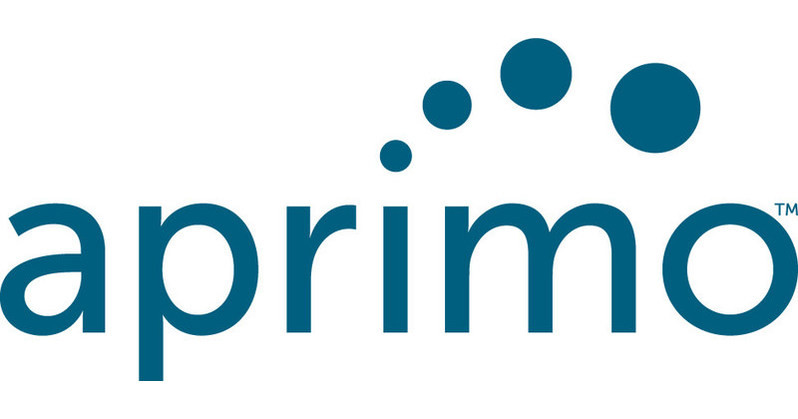The artificial intelligence (AI) market has exploded recently, with over 75,000 AI startups worldwide. AI tools are being used in every industry to streamline business processes and increase productivity. Digital asset management (DAM) software is no exception.
DAM software systems allow you to store, organize, and retrieve digital assets such as images, videos, documents, and other multimedia content. They provide a centralized platform where any authorized user in your company can access your digital assets.
DAM software has been a powerful tool since it was first introduced in the mid-1990s. AI features, powered by machine learning algorithms and natural language processing, have recently supercharged DAM systems by automating tasks such as metadata tagging and improving image and video recognition and search capabilities. DAM systems also offer predictive analytics so you can get the most out of your assets.
It may seem like new technologies are being released faster than you can read about them. However, keeping up with these innovations can help you optimize your digital asset workflows and gain a competitive advantage.
Recent Advancements in AI for DAM
Many modern DAM solutions already offer the following features based on current AI capabilities.
AI-Driven Metadata and Tagging
Metadata provides context about your digital assets, such as who created them, when they were created, what type of assets they are, and what rights you have to them. Tagging assigns keywords to your assets to help categorize them and improve your search results. While this is incredibly helpful when you need to pull up one specific image from last year’s ad campaign, it can be time-consuming for employees to enter all of this information manually for every asset.
AI features in DAM software can automate the process of categorizing digital assets and significantly reduce the manual effort involved. Advanced algorithms analyze the content of files and generate descriptive tags that accurately reflect the asset's characteristics.
Along with saving time and effort, automated metadata and tagging are more consistent and less prone to errors than human tagging. Your assets are more discoverable and can be accessed and managed faster. AI features let you efficiently organize large volumes of digital content and improve searchability so you can optimize your DAM workflows.
Natural Language Processing for Better Search Results
Natural language processing (NLP) is a subset of AI that allows computers to understand and generate human language. It has dramatically improved search capabilities in DAM systems. NLP lets your staff search for assets using the same language they would employ to talk about them. It makes it easier to find specific assets without having to remember exact keywords.
NLP understands context, synonyms, and user intent, so it delivers more relevant and accurate search results. Your teams will spend less time locating assets and more time using them.
Machine-learning Image and Video Recognition
Machine-learning algorithms let DAM systems analyze and catalog visual content with remarkable precision. These tools analyze visual elements within images and videos and automatically tag objects, scenes, and less tangible characteristics such as emotions.
This feature lets you find an asset even if all you can remember about it is that it included a girl with a blue hat. Your team will be able to locate specific visual assets for projects without having to remember the name or details of each one — or even that it exists.
Analytics Insight Into Asset Use and Performance
DAM systems use AI analytics to give you insights into asset use and performance so you can make data-driven decisions to maximize your return on investment (ROI). Measuring which content performs well and which doesn’t can help you focus your efforts where they’ll be most effective and avoid wasting time creating poor-performing content. These insights include metrics, such as how often assets are accessed, which assets are most popular, and user interaction patterns.
Analytics programs use this data to identify trends, predict future asset needs, and optimize content strategies. AI analytics help you understand the impact of your digital assets, improve content curation, and maximize your assets. DAM systems can actively contribute to your strategic planning and performance optimization.
Predictive Analytics for Personalization
In addition to providing insights that can help you optimize your content strategy, machine learning algorithms can improve search relevance over time based on user behavior. By analyzing user preferences, behavior, and past interactions, predictive analytics can suggest relevant assets so your team can quickly find the most useful content.
This personalized approach creates a better user experience and returns the most relevant assets. Integrating personalization and recommendation engines into your DAM systems helps deliver the right content to the right audience at the right time. It improves your productivity and effectiveness.
These systems can also tailor content delivery to user preference and integrate with your customer-facing systems to deliver personalized, branded content to your customers.
Secure and Transparent Asset Tracking With Blockchain
Blockchain technology allows secure and transparent asset tracking in your DAM system. It creates a decentralized and unchangeable record that guarantees the authenticity of digital assets. Each transaction or modification is verified and monitored by everyone sharing the database.
This radical transparency is particularly valuable for managing digital rights, licensing, and copyright information. Integrating blockchain into DAM systems improves security and provides a clear audit trail so it’s easier to manage and protect sensitive digital assets.
Automated Digital Asset Workflows
You can use AI tools in DAM systems to trigger specific workflows based on asset analysis. Once an asset is created, you can automatically route it through the approval process. The system can also flag outdated assets for review or deletion, automatically consolidate duplicates, and manage version control.
AI can automatically check the quality of an asset and identify issues such as noncompliance with brand guidelines or low resolution, so your team only uses high-quality, brand-compliant assets.
Emerging Trends in Intelligent Asset Management
The following emerging trends are powered by new AI developments. You can expect to see more of these features in the coming months and years.
Voice Recognition and Transcription for Improved Accessibility
Natural language processing features aren’t limited to text communication. They also work on voice recognition and transcription. In DAM software, these technologies bring accessibility to asset searches. Voice recognition and transcription convert spoken language into text.
This feature works on two levels. It allows people to search with voice commands, and it makes it easy to search audio and video assets based on the content within the file. Your teams can locate specific content within recordings by searching for keywords or phrases. With voice recognition capabilities, your DAM system will also work for people with hearing impairments. You can provide an inclusive platform that follows accessibility guidelines.
Ethical AI and Data Privacy: Ensuring Compliance and Ethical Use of AI in DAM
As AI capabilities have expanded, so have concerns over ethical implications and privacy concerns. While some experts predict that AI will have devastating negative impacts on mankind, and others believe that it will save us, no one thinks society will remain the same. AI is a major disruptor and can potentially operate on a massive scale.
We’re already seeing this in cybersecurity attacks and exploitative deep fakes. Bad actors can use AI programs to violate privacy and access personal data with little effort. As AI-driven DAM systems become more sophisticated, you’ll need to put strict measures in place to comply with data protection regulations and safeguard confidential data.
Cybersecurity organizations such as NIST have published frameworks you can use to implement measures such as encryption and secure access control. Your DAM system should be included in your ethical AI governance framework with practices such as transparency, accountability, and bias mitigation to promote fair and responsible use so you can reap the benefits of AI without contributing to societal harm.
Frequently Asked Questions
What are the main benefits of integrating AI into DAM tools?
Intelligent asset management tools improve the efficiency and productivity of your teams. They return more relevant search results and automate many aspects of your digital asset workflow. Predictive analytics helps you make data-driven decisions by providing valuable insights into how your assets are used, any gaps in your assets, and how you can optimize them.
How does AI-driven metadata tagging work?
AI scripts analyze your assets and automatically generate relevant metadata, tags, and categories based on the content of the files. These descriptive tags categorize assets accurately, eliminating the manual labor involved in data entry. As a result, your assets can be easily retrieved with natural language and without the need to remember specific keywords.
What is the role of machine learning in DAM?
Machine learning drives several processes in intelligent asset management. It enables predictive analytics and insights into user behavior. It analyzes historical data to predict trends and optimize search results for more personalization. Machine learning also helps automate processes by triggering workflows based on specific events.


